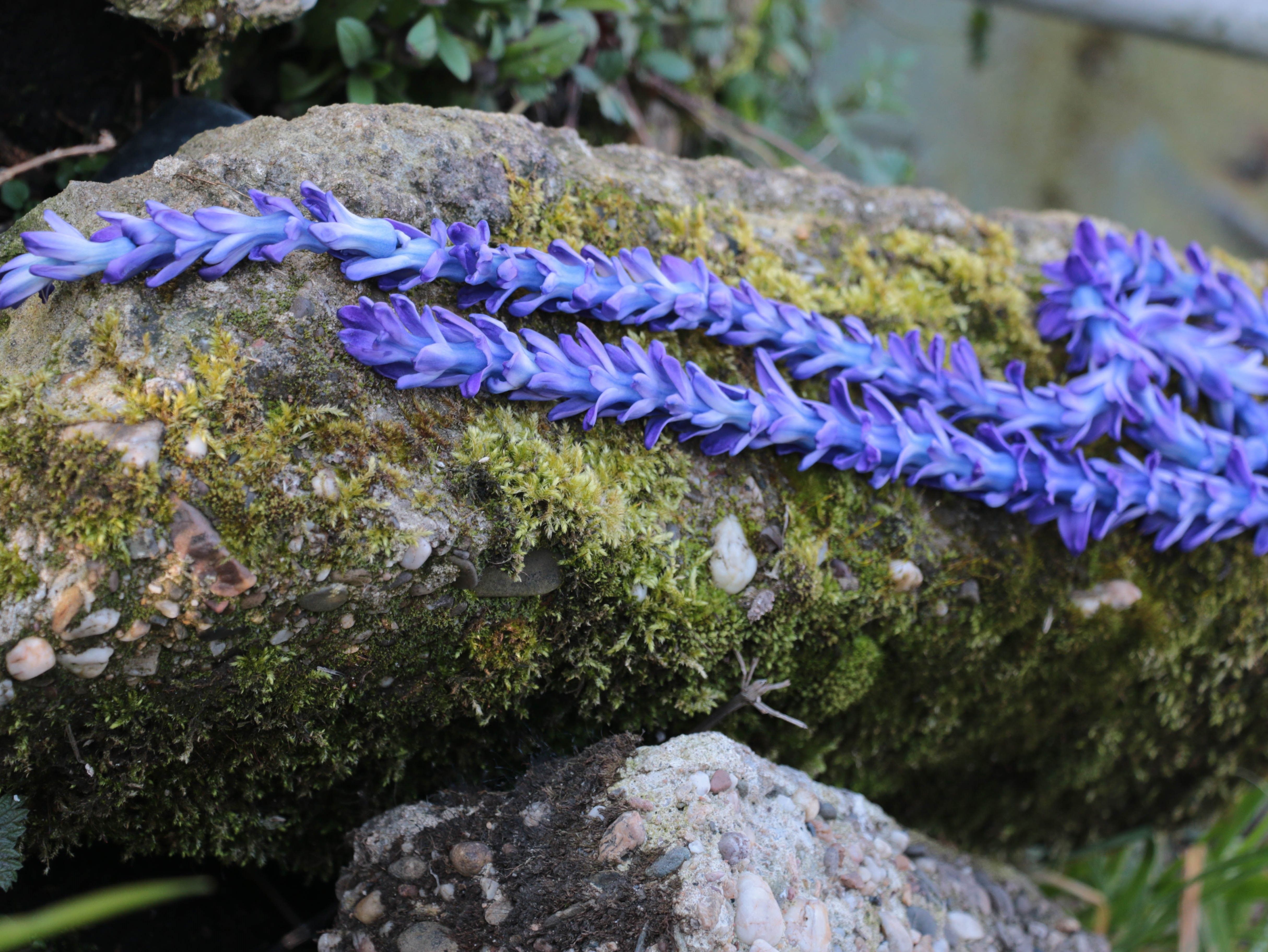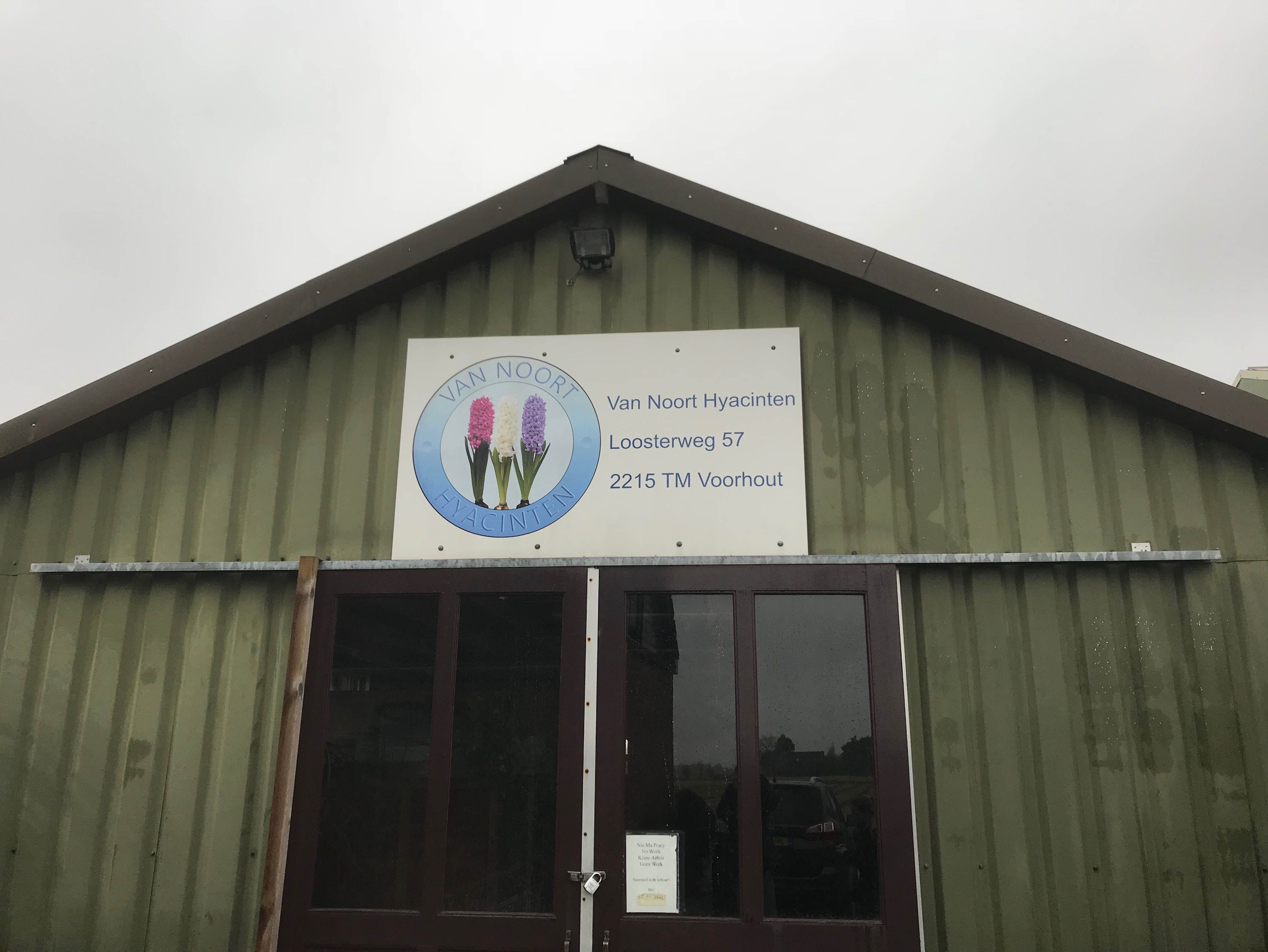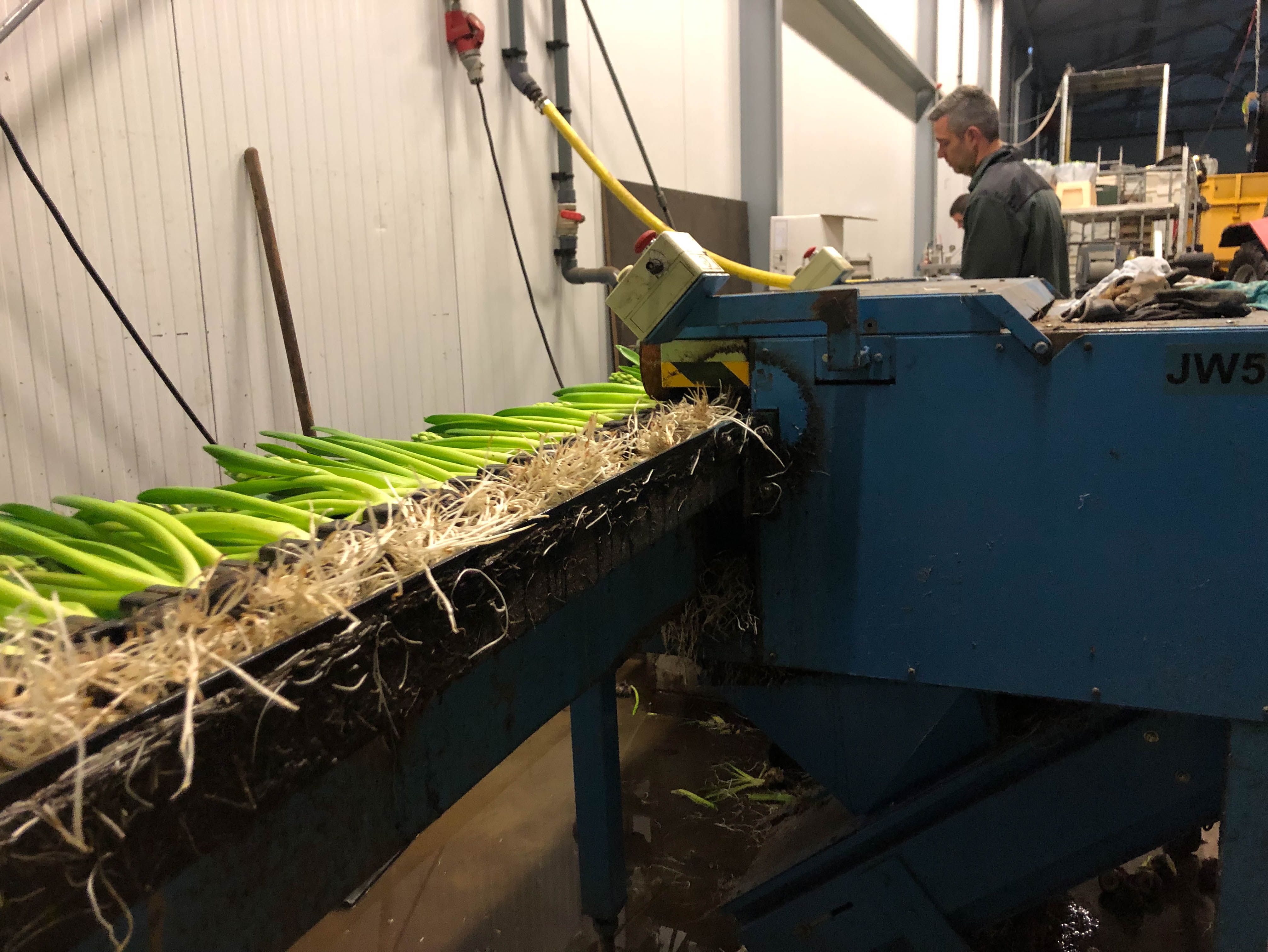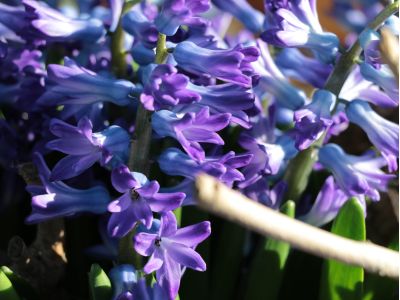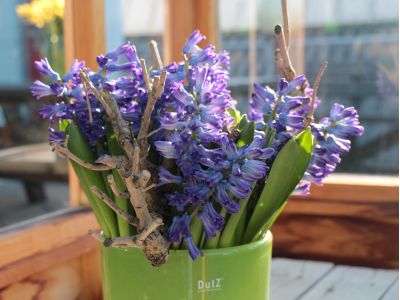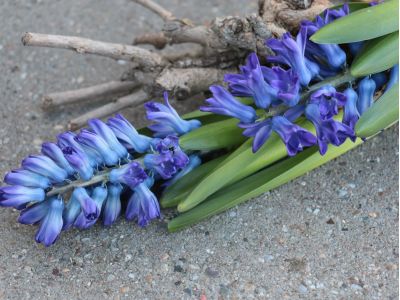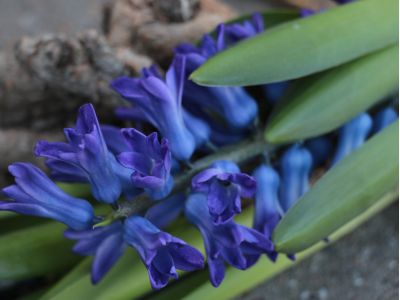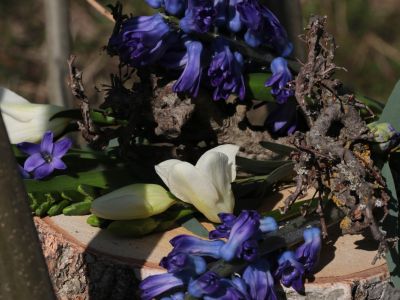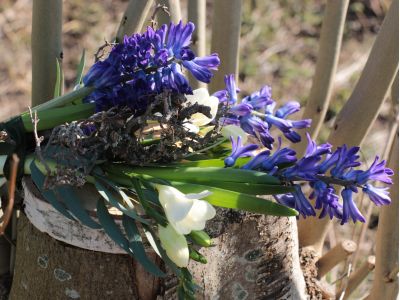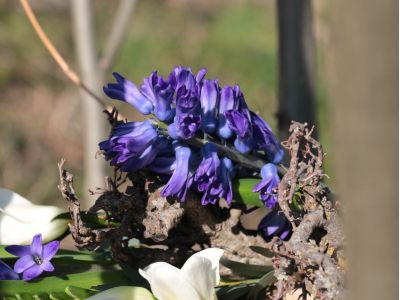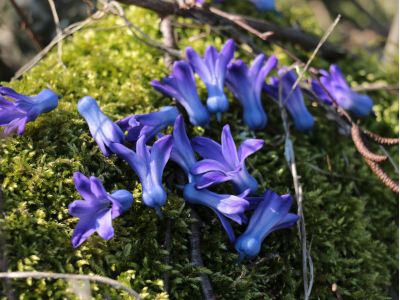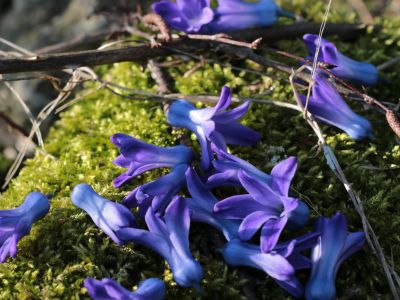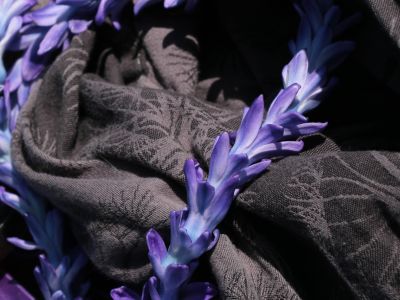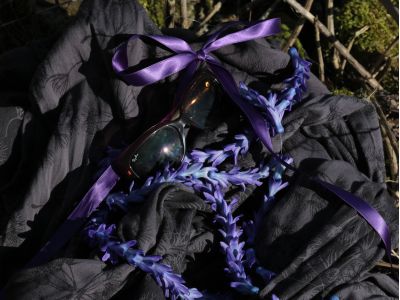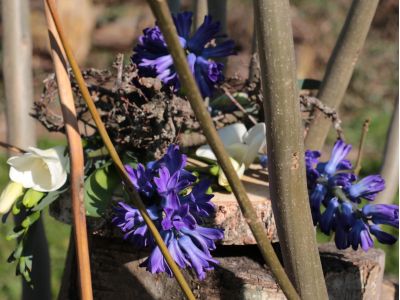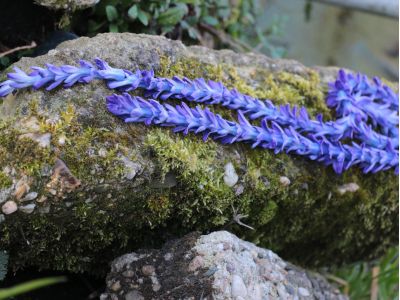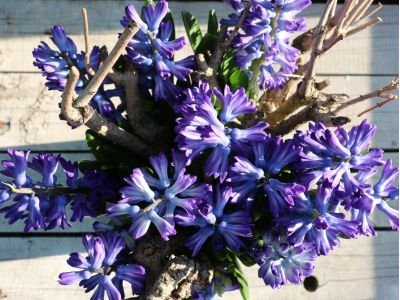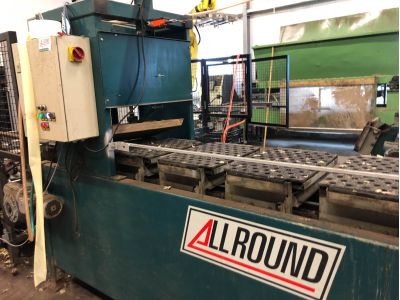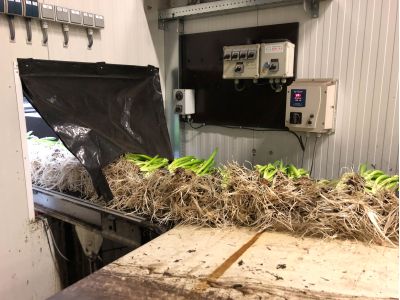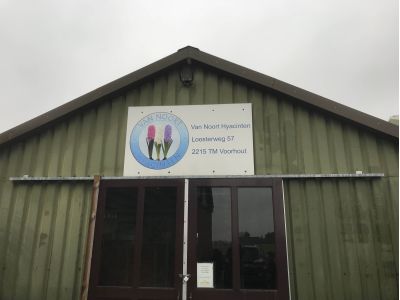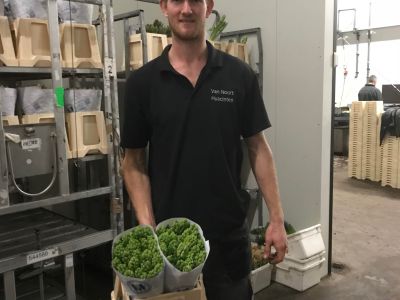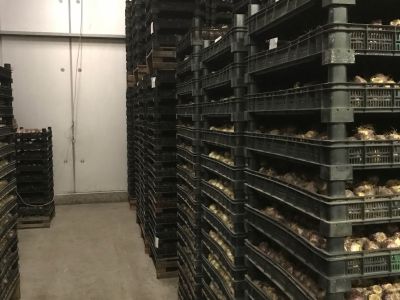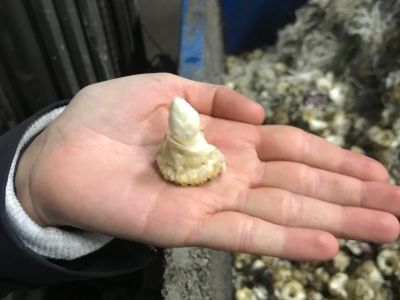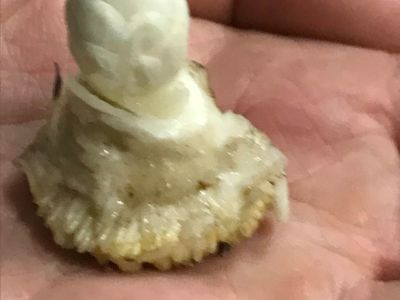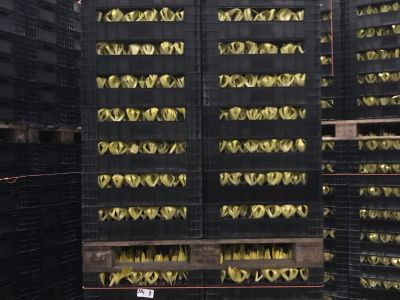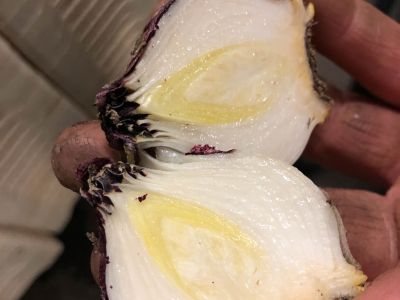Hyacinthus Dark Ocean
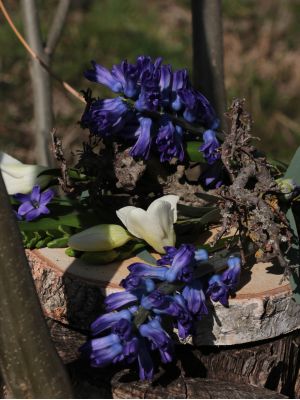
Calendar
De Hyacinthus 'Dark Ocean' is available from January till the beginning of May.
In the spotlights
The annual CNB Flower and Relations Days took place in January. This always focuses on the inspection of lilies, tulips, daffodils, muscaris and hyacinths. An excellent opportunity for FloraPodium to be inspired and get reacquainted with the beautiful products spring has to offer. The CNB is a Dutch Cooperative Bulb organization and is the largest marketplace for the trade in flower bulbs, tubers and perennials. During the event we noticed a prize winner: Hyancinthus 'Dark Ocean'. She is darker than the famous 'Delft Blue'. We went to visit the Van Noort Hyacinth nursery for this FloraPodium edition to hear the story behind this product.
Remarkable
That 'Dark Ocean' was this year’s prize winner as 'best hyacinth in the vase', we can certainly understand. At the fair, this product stood out due to the deep blue color of the spikes (the flowers). The spikes of 'Dark Ocean' are much darker than the spikes of 'Delft Blue'. The product looked very beautiful in the vase and it had an excellent heavy quality. Naturally we also wanted to know which where the key characteristics that made the CNB decide to choose this product as ‘best hyacinth in the vase’.
The hyacinth was inspected during the annual inspection by the members of the Nomenclature Hyacinth Section. We talked to Bas Scholten, a member of this committee, and asked him why exactly this product had been awarded. Bas told us that six characteristics of the flower are being tested. First of all the stage (the ripeness of the flower), the color consistency (whether all spikes have the same color or are discolored), the number of spikes, the leaf / flower ratio, the length and firmness of the stem and finally the general presentation.
In general it was clear that the quality of the hyacinths was better this year than last year. That is of course an interesting fact! Why would that be? Bas explains: "One year is just better than the next year. That is mainly caused by the weather conditions. When it’s sunny and the wind blows from the right side, the bulbs grow better. If it’s deep winter and the wind blows from the east, it seems as if nature is being held back ".
"'Dark Ocean' stood out because it was in 'perfect show stage'. That is when all spikes are full color. The length and foliage ratio was also better than with the other candidates, "says Bas.
Hyacinth with or without a bulb?
When the flowers are bunched, they are first stripped of their bulb. Only the inner part of the bulb remains at the end of the stem. This unfortunately is also the part that florists and consumers tend to remove, which they shouldn’t! That small piece of bulb ensures that the hyacinth can properly absorb its water from the vase. Hyacinths do not go well with other flowers in a vase. The hyacinth bulb releases large amounts of slime which causes other flowers to absorb less water.
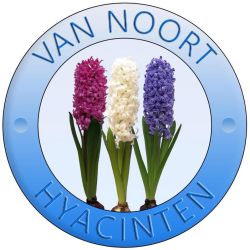
Cultivation
We spoke to Ruud from nursery 'Van Noort Hyacinten', located in Voorhout: in the middle of the Dutch bulb region! The company was founded in 1976 by Frank and Ruuds grandfather. The brothers are currently forcing 15 types of hyacinths.
Growing is the propagation of the bulb, forcing is the flowering of the bulbs.
Scalding
The hyacinths are forced inside a greenhouse on 1500 square meters. The bulbs are grown on two hectares outside. The brothers grow a quarter of the bulbs they need themselves. The remaining three quarters are bought from other bulb growers. The bulbs are now almost completely forced on water. This new method was first used on tulips, but now other crops are being forced the same way. The biggest advantage is that the hyacinths now remain clean (less sand etc. on the stems). This makes it easier to export them. If there is still soil / sand on the stems, some countries prohibit import. With special techniques they are now able to grow hyacinths all year. They have however decided to limit the breeding to the period of August 15 to May 15, because there is only very limited demand during the summer.
Flower in the bulb
When the bulbs are harvested, they are put in a cell that keeps the bulbs warm (25 degrees Celsius). The flower develops in the bulb in the warm cell. If the bulb has had enough heat for a long time, it can be planted and then be put in cold storage (6-9 degrees). Here the bulb starts to root and the flower starts growing from the bulb. Because there is no light in cold storage, the hyacinths will remain completely yellow. When the hyacinths have grown enough, they are moved to the greenhouse (20-23 degrees). Here they grow into hyacinths of about 30 cm. Thanks to the light in the greenhouse, the hyacinths turn green again. After an average of 7 days, the flowers can be harvested.
Propagation
After the two brothers took over the company, they invested in automation and broadening their assortment. Ruud and Frank have invested a lot of time in recent years in supplying a unique product range. Now they have established themselves with an assortment of 15 varieties. As with tulips, the process of propagation takes a very long time. The brothers do not do the breeding themselves, but they have good agreements with various bulb growers. New varieties are tested every year. If there are varieties that show promise, they are added to the range. But sometimes there are only a few bulbs available of these new varieties and it may take years for larger quantities to become available.
Automation
In addition to broadening the range, Ruud and Frank have also worked a lot on quality improvement and automation. The company is now almost fully automated. The bulbs are automatically transported to the right place in the company. That way they can reach the bins at exactly the right time so the bins do not have to be lifted which is an important improvement! Furthermore, a tulip machine is used for planting the bulbs in greenhouses. In the future we can expect much more supply of hyacinths from the duo, because in the newly built greenhouse a second layer is being built on which a second layer of hyacinths can grow. This new greenhouse will also be applicable for the green label certificate. This means that regarding climate, energy consumption and water consumption certain environmental requirements are met, but also that issues such as limitation of crop protection (not used by Van Noort) and light pollution receive sufficient attention.
FloraPodium, 28 February 2019







